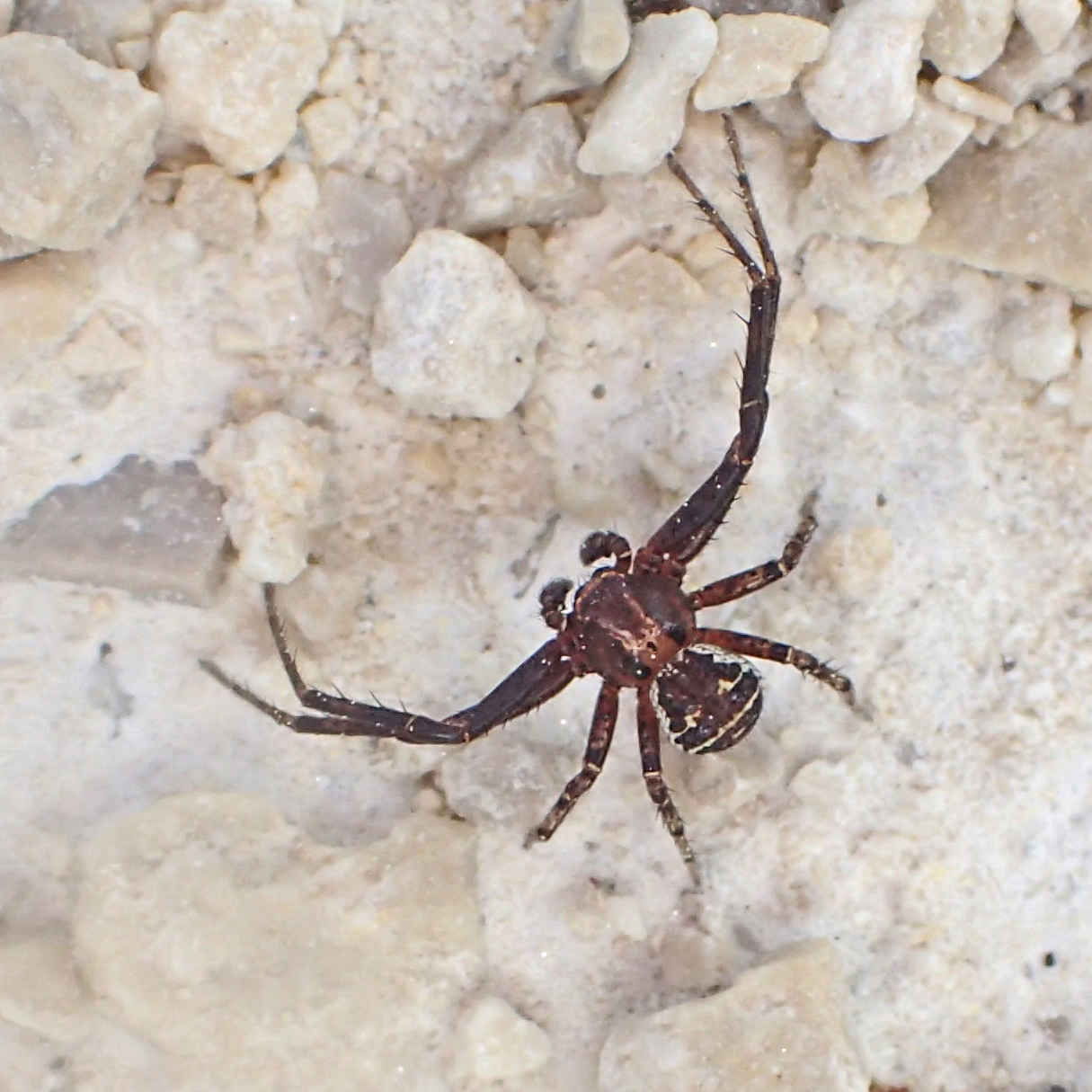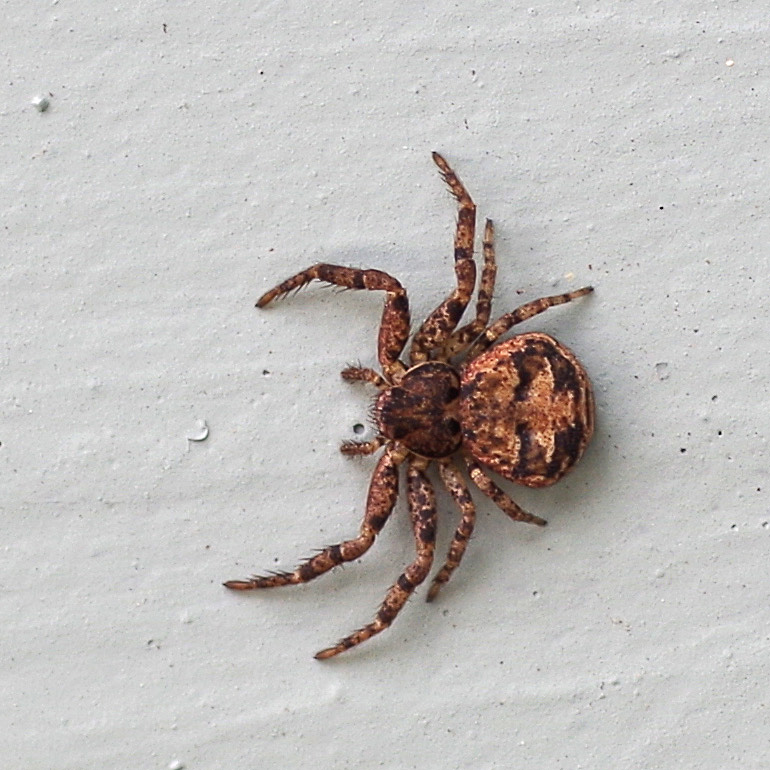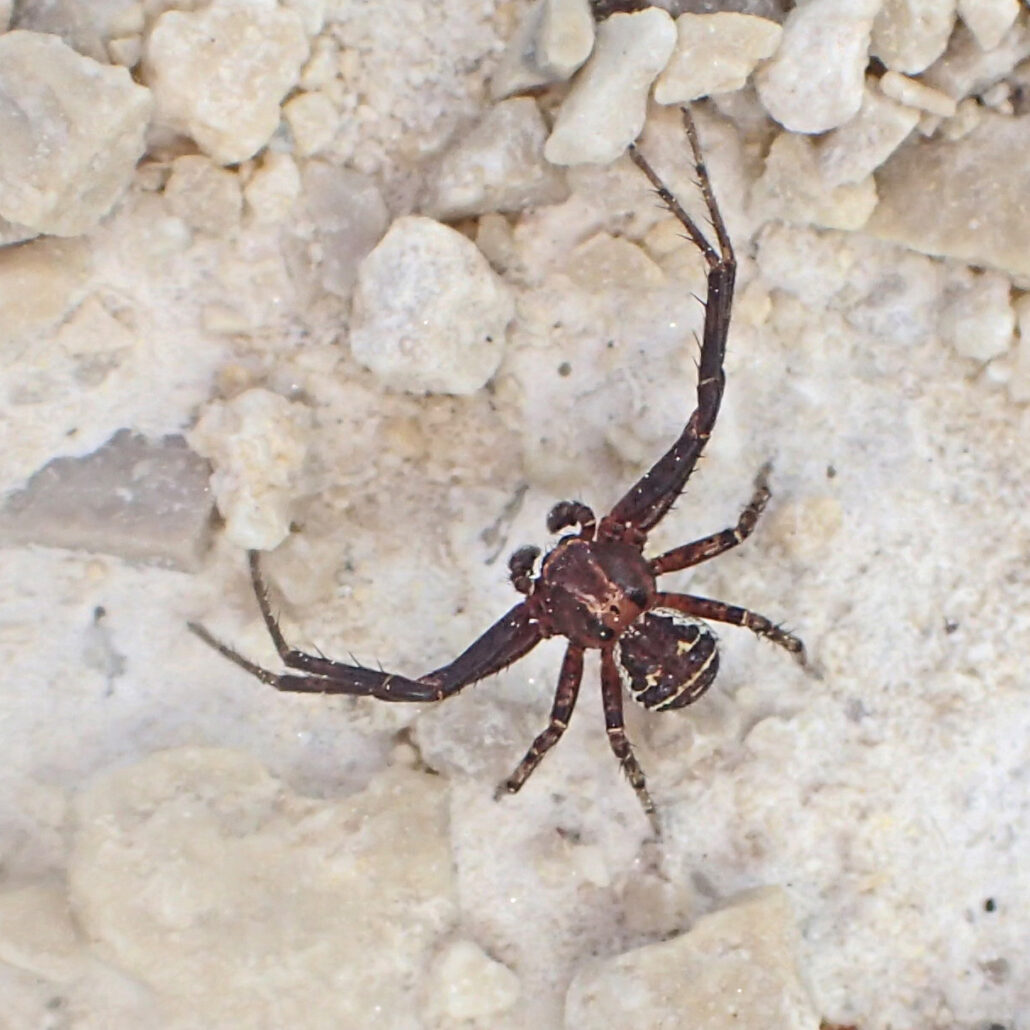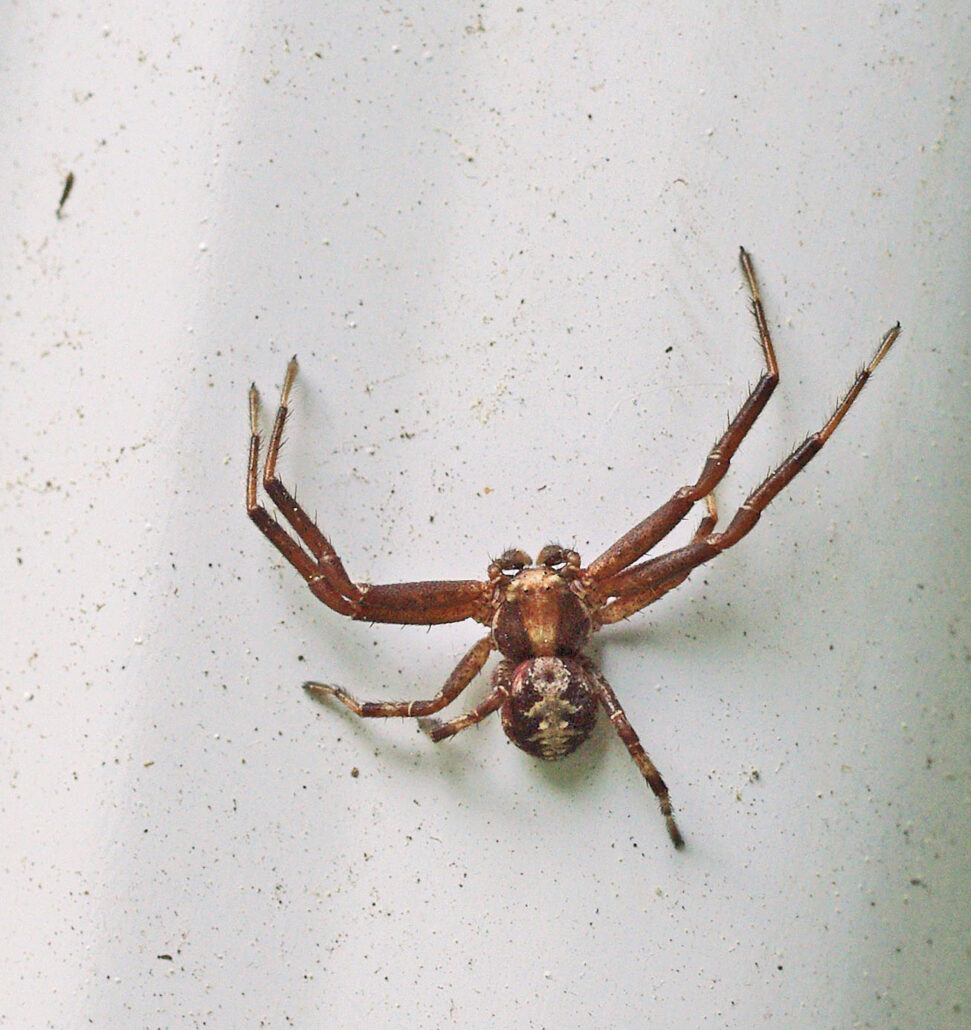
by Kate Redmond
Ground Crab Spiders
Howdy, BugFans,
Crab spiders need no introduction to these pages – several genera of delicate, flower crab spiders https://bugguide.net/node/view/621778/bgpage, https://bugguide.net/node/view/3928/bgpage, https://bugguide.net/node/view/2201967/bgimage have appeared in previous episodes.
Well, maybe a quick review:
They are in the family Thomisidae, which has about 130 species in nine genera in North America (14 genera worldwide). The coolest genus that the BugLady has seen is the genus Tmarus, which can look like tiny octopi https://bugguide.net/node/view/1238420/bgimage.
Crab spiders do not spin trap webs; they are ambush hunters that lurk on flowers, leaves, or bark, or in leaf litter, waiting for their prey – insects and other spiders – to appear. They get their name from their ability to walk sideways and backwards using just their four back legs and, of course, from their two pairs of long, thick front legs (the name “crab spider” is shared with several unrelated, crab-like spiders). They have eight eyes https://bugguide.net/node/view/306006/bgimage, and in some species, the eyes are on tubercles. Their wide, flat bodies are generally less than a half-inch long, and some species can (slowly) change color from white to yellow and back.
Although they don’t spin trap webs, they do spin silk for reproductive purposes and as drag lines when they launch themselves at prey on a flower top.



There are sixty-seven species of GROUND CRAB SPIDERS, genus Xysticus, in North America. Most come in earth tones, and many have a disruptive pattern on their abdomen that helps to camouflage them. Contrary to the name “Ground crab spider,” they can be found on leaves, stems, and flowers as well as on the ground, on rocks, and on rotting logs.
The BugLady has a file of Xysticus-like spiders, but (alas), there are several similar genera like Bassaniana (the Bark crab spiders) and Ozyptila (sometimes called the Leaf litter crab spiders), that, along with the Ground crab spiders are more, well, muscular-looking, and that can be tricky to tell apart without looking at the “naughty-bits. Xysticus also has three or four pairs of macrosetae (large, hairlike projections) on its front legs and a more domed carapace (the covering of the front portion of the spider – the cephalothorax).
They don’t make trap webs, and they don’t wrap their prey before eating it, either. They station themselves where there’s a lot of “traffic,” grab small invertebrates that get too close, subdue them by wrapping their long, front legs around them, and then kill them with a venomous bite and consume the innards. They’re eaten by birds, reptiles, and small mammals that forage on tree trunks or on the ground.
Not many sources took a deep dive into their natural history, and the accounts were a bit contradictory. Some lumped them in the generalized Crab spider pattern of eggs/spiderlings staying in the egg sac all winter, emerging in spring, and maturing in summer. Other sources said that the young overwinter as almost-mature spiderlings and that Xysticus spiders have been seen trekking across snow on warm days in winter. Boy meets girl in summer and he immobilizes her with silk to ensure her cooperation. He is small and she is large, and she has no trouble slipping her bonds when he leaves. She will continue to create egg sacs, sometimes folding a leaf around the sac and webbing it partly shut to conceal it https://bugguide.net/node/view/2372239/bgimage, until she dies in fall’s first freezes. The total life span is about a year in northern climes.
Like many kinds of spiders, male Ground crab spiders are smaller and more angular than females, with noticeably slimmer abdomens (sexual dimorphism), and they have large pedipalps (the segmented, sensory mouthpart-like appendages) that look like boxing gloves https://bugguide.net/node/view/1959514/bgimage. Larger females can catch larger prey, and so consume the extra nutrients needed to make eggs. There are several hypotheses about the size difference. First, females may be larger because they produce eggs, and larger females tend to produce more and healthier offspring, but large size is not an advantage for the males. Another idea called “male dwarfism” says that smaller males can get around more easily and have a better chance of finding a female. Still another hypothesis says that the size difference was a chance development and there’s no particular advantage to being either large or small.
Thanks, as always, to BugFan Mike for his spider advice.
Kate Redmond, The BugLady
Bug of the Week archives:
http://uwm.edu/field-station/category/bug-of-the-week/
